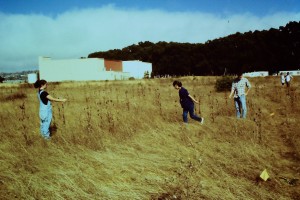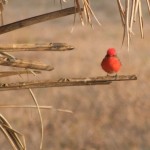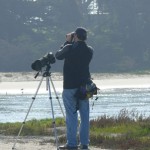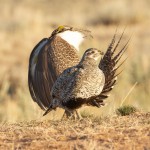
Students in the UC Berkeley Bio 1B Field Section study small mammal ecology at the Richmond Field Station
You may have seen the recent news that Lawrence Berkeley Labs may expand into the Richmond Field Station (between Pt. Isabel and Marina Bay, just back from the wetlands at the edge of the SF Bay). I don’t yet have a strong opinion- I haven’t yet read any details about the work they are proposing- but the story caught my eye since I spent quite a bit of time at the RFS during my first year in graduate school at UC Berkeley. I came in without a fellowship and spent the first year TA’ing. Along with most of the incoming students, I was assigned to be a graduate student instructor for the introductory biology course, but I was fortunate to end up in a special field ecology section. At the time, the course was centered on semester long group projects involving small mammal (mouse and vole) ecology in some feral fields in RFS. It was a really fun, valuable (but intense) experience both for me and the students. I think the photo above was taken in 1998.
Going even farther back (1994!), the Ecology and Evolution seminar last week was given by an old acquaintance of mine. Carlos Bustamante and I, along with a couple dozen other interns, spent a summer at the Smithsonian National Museum of Natural History in Washington, D.C. We were there as part of the undergraduate Research Training Program (a great opportunity for any undergrads out there interested in evolution- I don’t see it listed in their current website but it looks like they now have a huge range of opportunities there). I’ve seen a number of former interns since then, but hadn’t seen Carlos in a very long time. He gave an absolutely phenomenal talk on population genomics- a topic that normally would go zooming over my head but he made it exciting, interesting, and important. Bravo Carlos! No wonder you won the MacArthur genius award!




